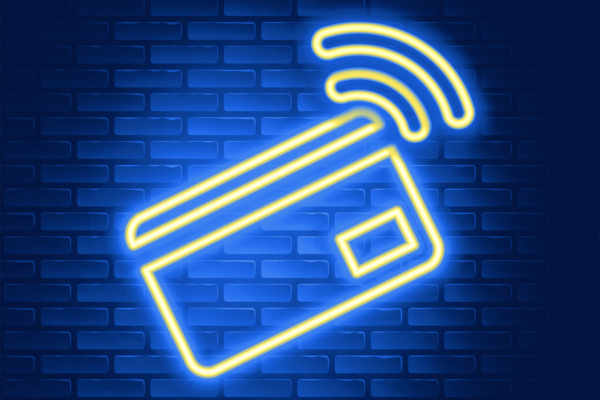
Banking with an ITIN

Even if you’re not a U.S. citizen, you still have the opportunity to open a bank account in the United States by using an Individual Taxpayer Identification Number, or ITIN. Usually, financial institutions require a Social Security number (SSN) to open an account, but there are some banks and credit unions that accept ITINs as a form of identification, making ITINs an important tool toward financial stability. Here, we’ll discuss what exactly an ITIN is, how to get one, and how you can use it to open a bank account.
What is an ITIN?
If you don’t have a Social Security number, you can receive an ITIN—regardless of your citizenship or documented status. The ITIN is an identification number issued by the Internal Revenue Service (IRS) as an efficient means to process and account for tax returns and payments to the IRS for those who are not able to obtain a Social Security number.
It’s important to note that ITINs are issued regardless of an individual’s immigration status, as both resident and non-resident aliens may be required to pay taxes under the Internal Revenue Code. Furthermore, it’s also important to understand what an ITINs is not. For instance, an ITIN cannot:
- Authorize an individual to work in the U.S.
- Provide eligibility for Social Security benefits
It All Starts Here
Begin your journey today with a fee-free savings–no minimum balance fee, no overdraft fees!
What documents do you need for an ITIN?
If you’re eligible for an ITIN, there are a several ways to go about obtaining this crucial piece of identification, but no matter what method you choose, there are certain required documents you’ll have to provide to ensure your application is processed successfully.
Please note: we are not tax professionals and can’t give tax advice. Always consult a tax or immigration professional before making any decisions or filing for an ITIN.
W-7 Form
First, you’ll need to complete IRS Form W-7. This is the primary document you’ll need to let the IRS know that you’d like to obtain an ITIN. It’s available in both English and Spanish.
Proof of Identity and Foreign Status
Next, you need to prove you are who you say you are, and that you’re not a U.S. citizen. No matter which document you choose to submit, it must be current and have an expiration date. The document must also show your name and photograph. The list of accepted documents is as follows:
- Passport
- National identification card
- U.S. driver’s license
- Civil birth certificate
- Foreign driver’s license
- U.S. state identification card
- Foreign voter’s registration card
- U.S. military identification card
- Foreign military identification card
- Visa
- U.S. Citizenship and Immigration Services (USCIS) photo identification
- Medical records
- School records
As a note, the passport is the only document that can be submitted alone. If you don’t have a passport, you’ll have to provide the IRS with at least two different documents from the above list.
Proof of Residency
Finally, the IRS also wants proof that you’re actually living in the United States. If you’re 18 years of age or older, you can provide one of the following documents to prove you reside in the country:
- U.S. school record
- Rental statement from a U.S. property
- Utility bill for a U.S. property
- U.S. bank statement
- U.S. state identification card or driver’s license that lists your name and U.S. address
- U.S. visa
How do you apply for an ITIN?
Once you’ve gathered your documents, you’re ready to apply. There are currently three different ways to send your application to the IRS.
1. Mail an Application
You can apply for an ITIN at the same time as you file for your taxes. To complete the application, you’ll need to mail your tax return and your W-7 Form along with your proof or identity and foreign status, as well as your proof of residency to the following address:
Internal Revenue Service
Austin Service Center
ITIN Operation
P.O. Box 149342
Austin, TX 78714-9342
The IRS has specific instructions on how long it will take to get your documents back. You can also choose to submit copies of identifying documents—but they have to be produced by the agency who issued them.
2. Submit Via an Authorized IRS Certifying Accepting Agent
If you prefer not to send your identification documents via mail, you can apply for an ITIN in person with the services of an IRS-authorized Certifying Acceptance Agent. You can access these services both inside and outside the U.S., and you usually have to make an appointment. When you do go to meet with the Certifying Accepting Agent, make sure you bring your original documents.
3. Visit an IRS Taxpayer Assistance Center
The third option is to apply for your ITIN at an IRS Taxpayer Assistance Center. This method also means you don’t have to be separated from your proof of identity and foreign status documents. You can find a list of center locations by state on the IRS website here.
How do you open a bank account with an ITIN?
After you have this important piece of identification, you’re ready to open a bank account with your ITIN number. To open a checking and savings account in the U.S. without an SSN, you’ll have to provide four things:
- An opening deposit
- A photo ID
- Proof of residence
- ITIN
That’s it. With those four pieces items you’re on your way to having your very own bank account in the United States.
Please note: every financial institution has their own specific requirements for identification; it’s always best to ask in advance to make sure you have the appropriate documents. For example, if you are using a foreign passport as your photo ID, you will also most likely need to show your valid visa as well.
Why should you open a bank account with an ITIN?
The hardest part of the process is obtaining the ITIN, but once you’ve complied with all the IRS requirements and obtained that number, your financial future in the U.S. has the opportunity to become much more stable. Here’s why:
Security
It’s generally not the best idea to keep large sums of cash at your home or carried around with you. Cash can be easily lost or stolen. A personal checking and savings account is a safe and secure place to store your money. Not only is your bank unlikely to be robbed, but even if that worst case scenario were to happen the money is insured by the FDIC or NCUA and would be replaced.
Credit History
An important part of building a firm financial foundation in the United States is establishing a history of good credit. The most common way to establish credit history and a credit score is through the use of credit cards—which are almost impossible to obtain without an official bank account in the country. By opening a bank account, you can help build your credit history, which will in turn make it easier for you to borrow money at some point to buy a car, a house, or to open a business of your own in the future.
Open Your Account with Amplify Credit Union
You can also save money when you open a bank account with your ITIN, especially when you choose fee-free banking with Amplify Credit Union. Amplify accepts ITINs and has worked hard to remove obstacles that stand between its members and financial success. As a credit union, Amplify doesn’t charge any fees whatsoever: no maintenance fees, overdraft fees, out-of-network ATM fees, and no wire transfer fees. We’re here to help you achieve financial success!
Fee-Free Banking is Here
Looking for a financial institution that doesn’t nickel and dime you? If you live or work in Texas, join Amplify!




